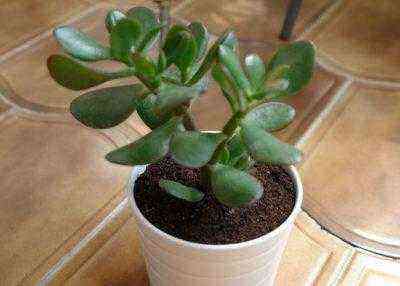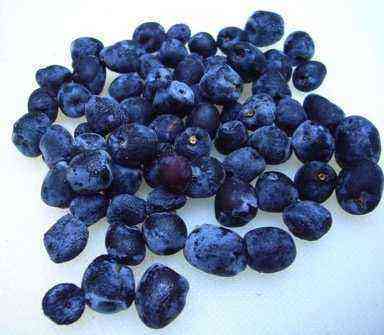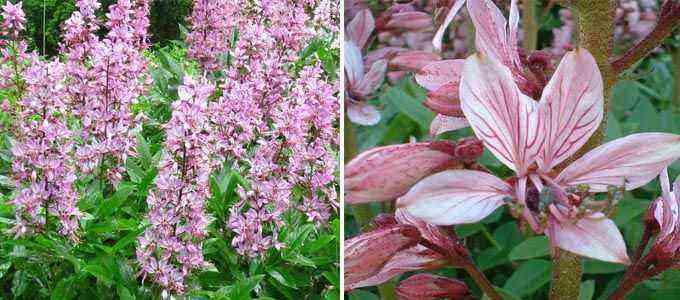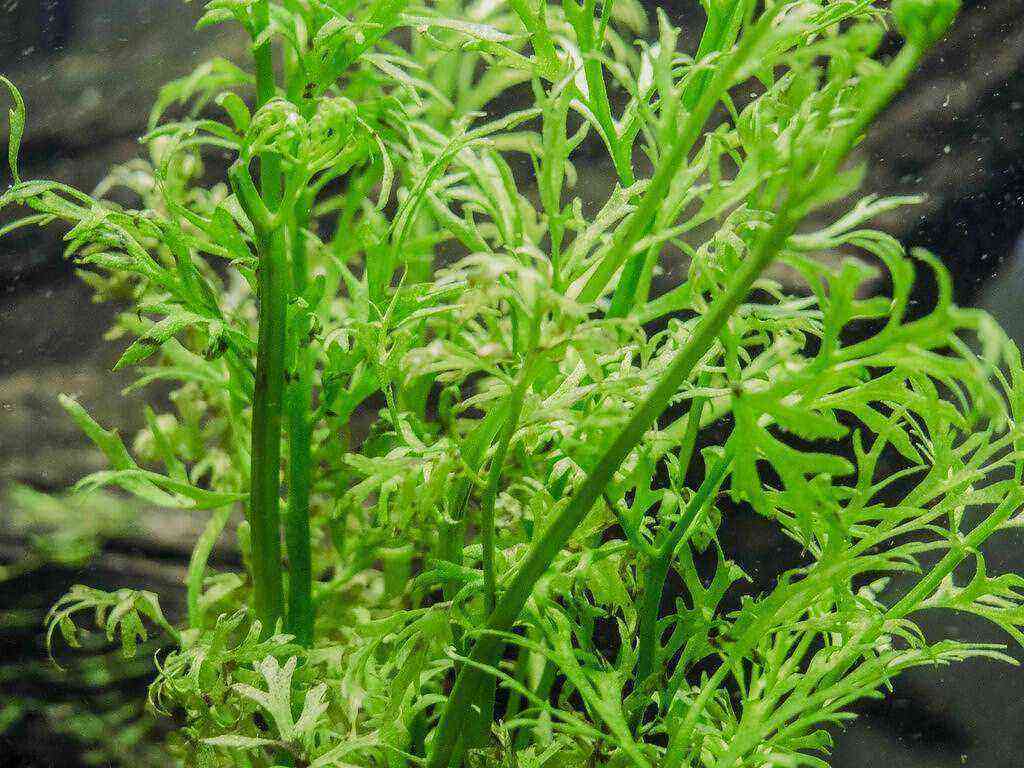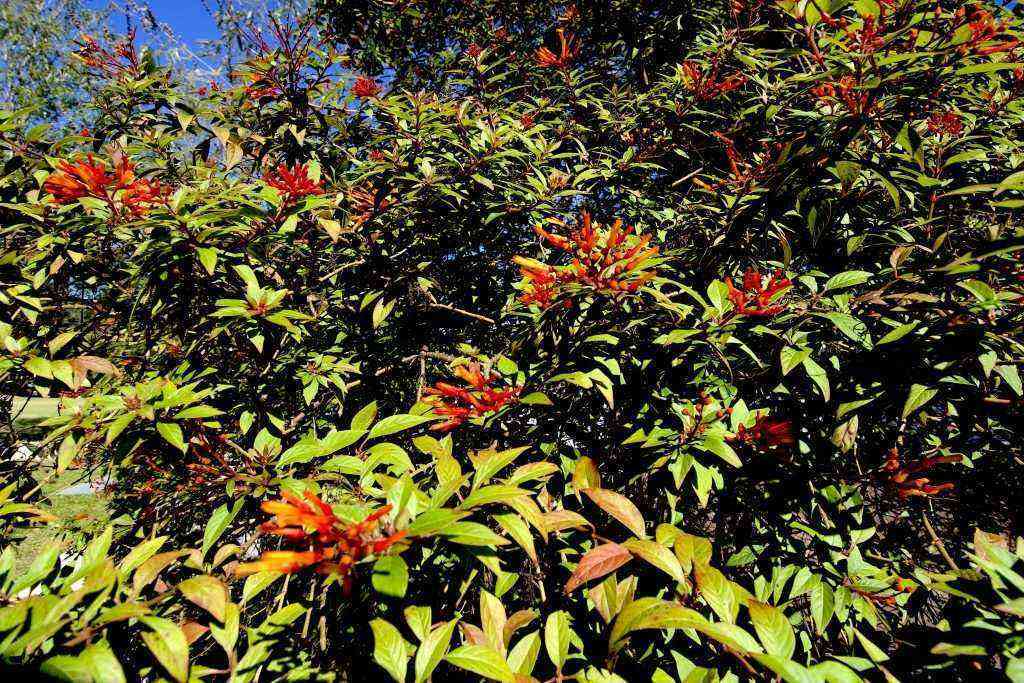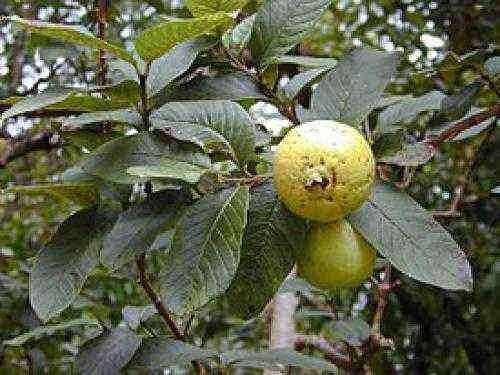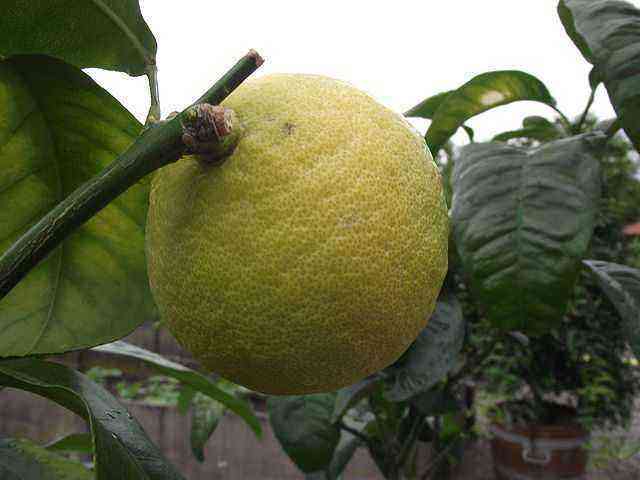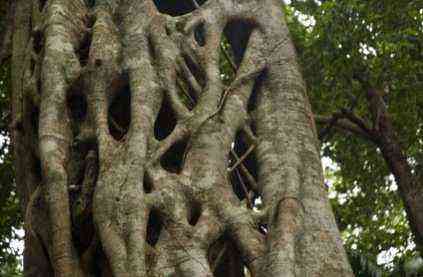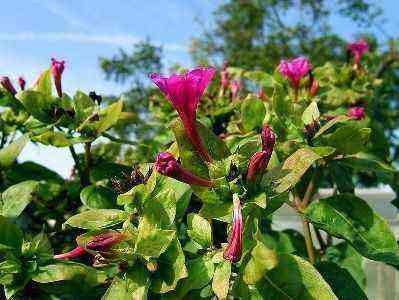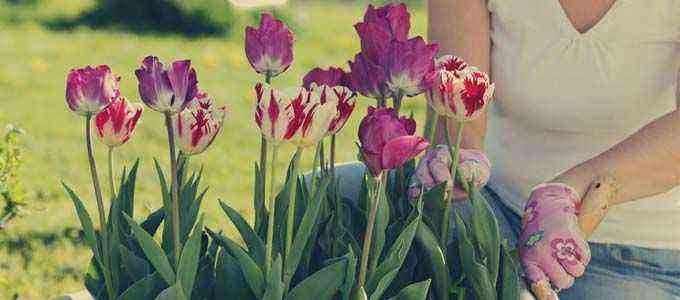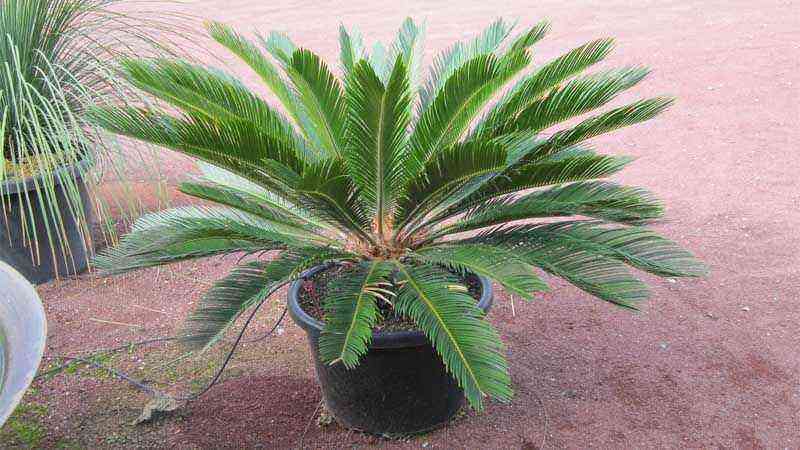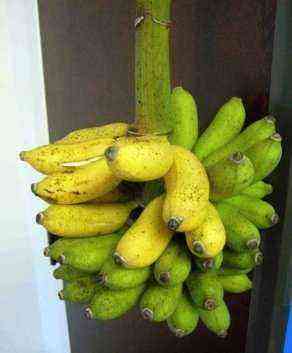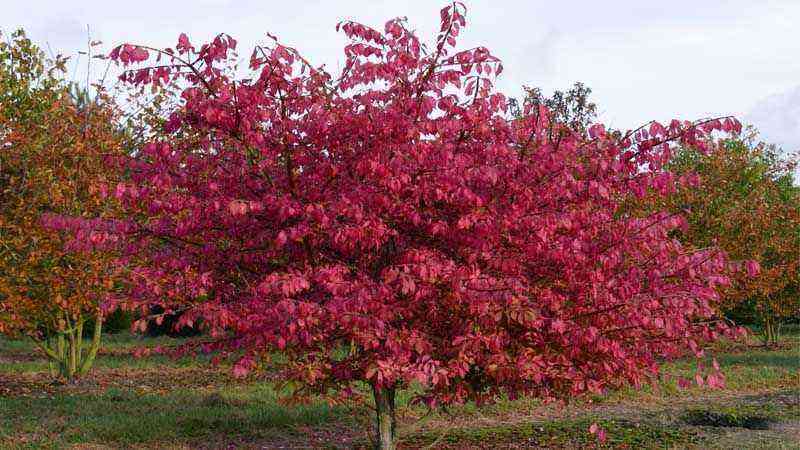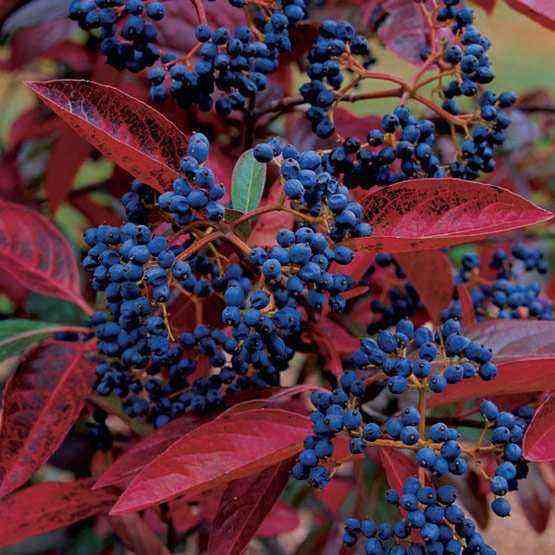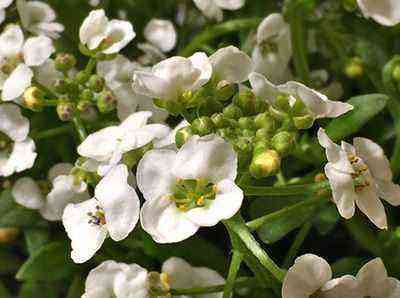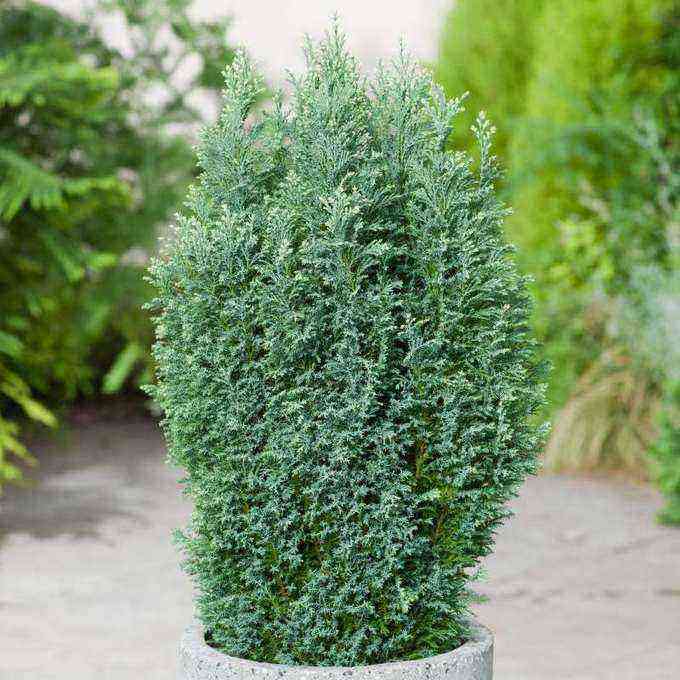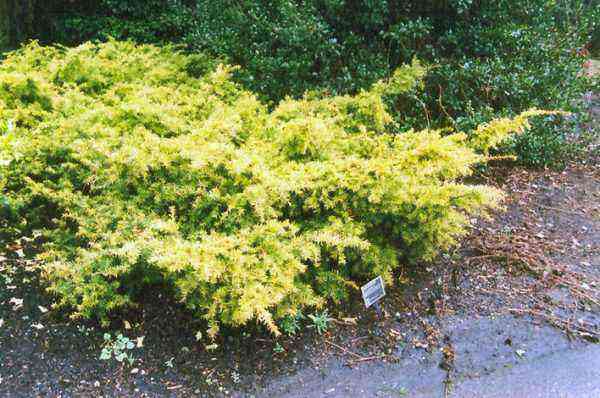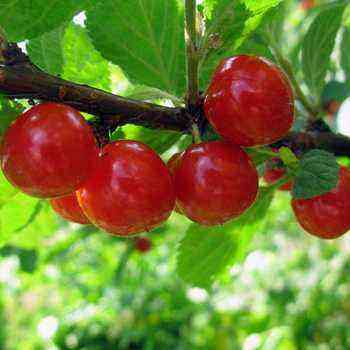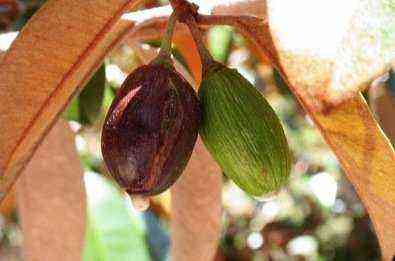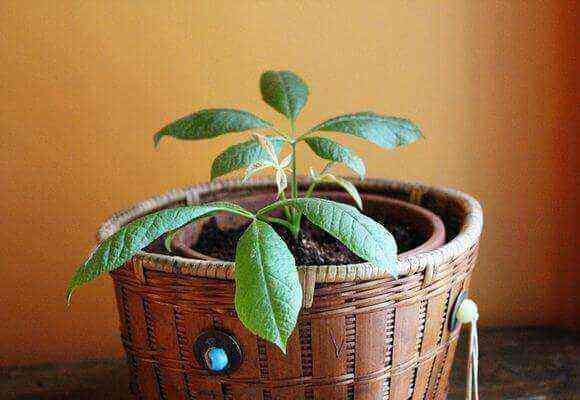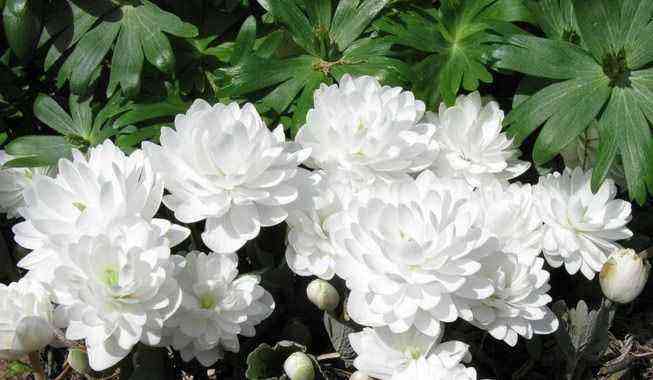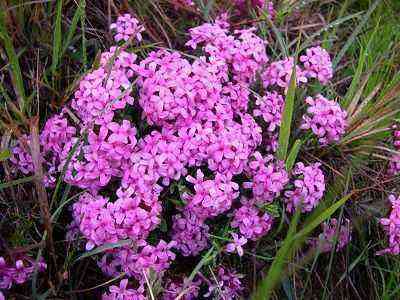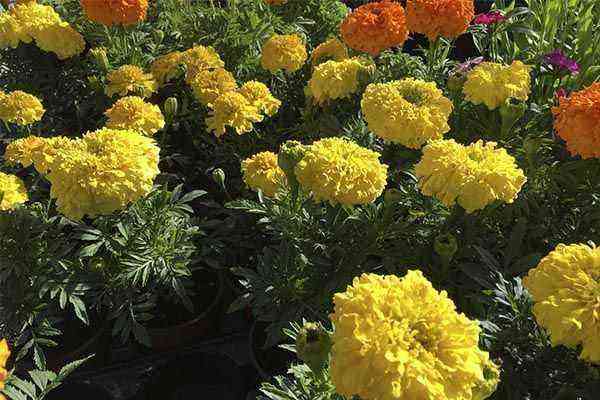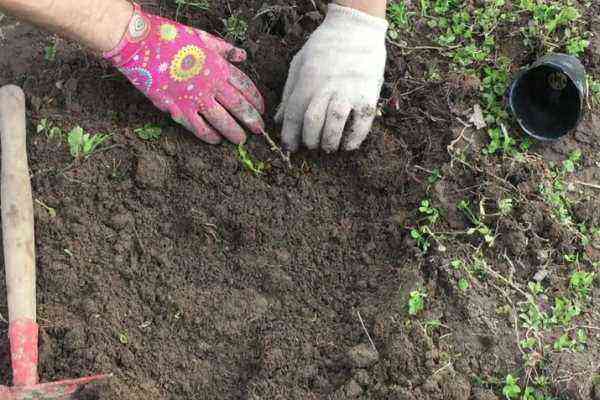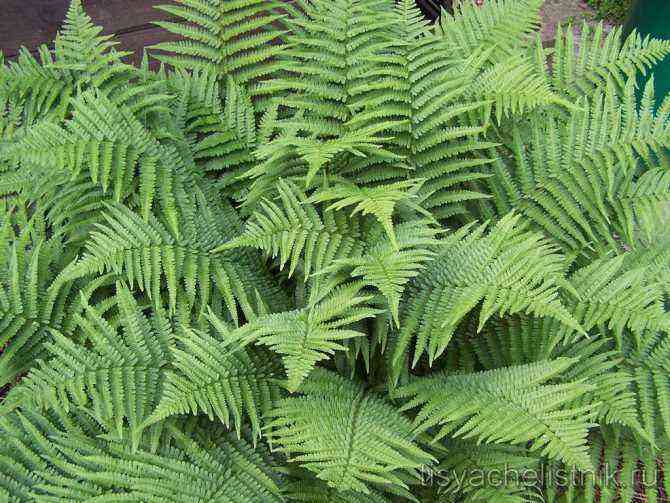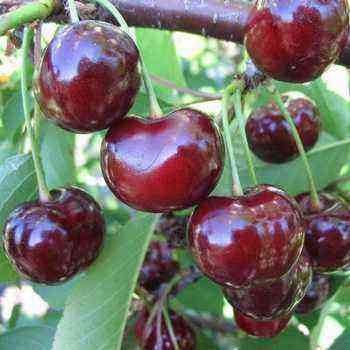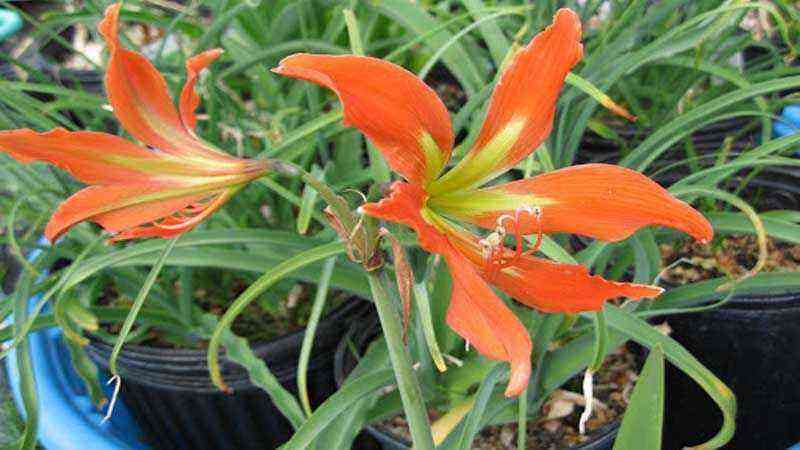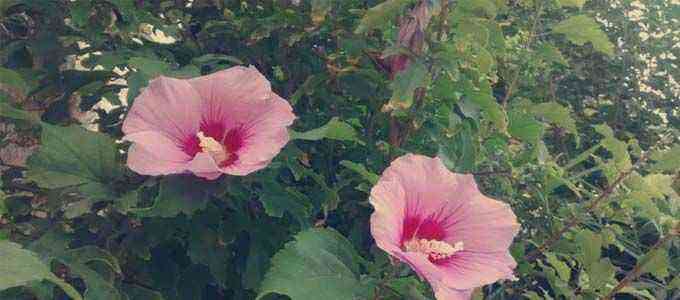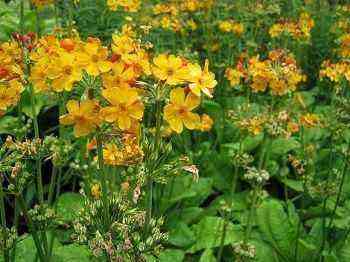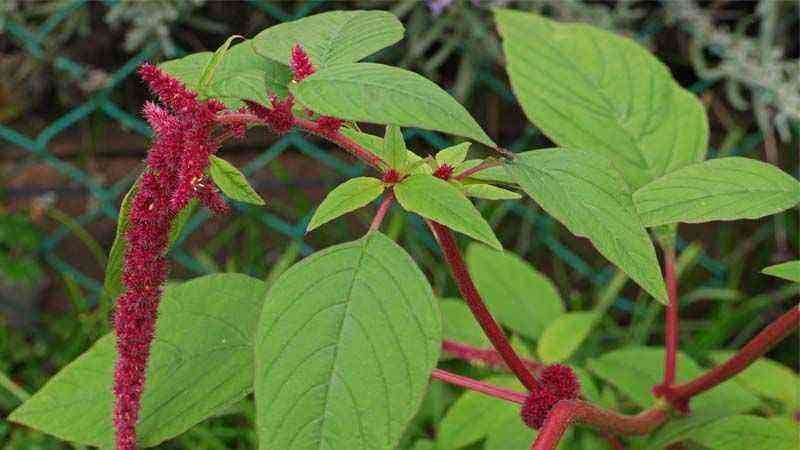Caring for Japanese quince in the fall
Chaenomeles is unpretentious. However, many complain that they are unable to grow healthy shrubs. Such that they did not have dry branches, were beautifully shaped, bloomed profusely and bear fruit. As a rule, this is a consequence of not only the wrong choice of the landing site, care errors, but also an inattentive attitude towards chaenomeles in the autumn period.
Pruning chaenomeles. In late summer, I walk along a Japanese quince hedge with pruning shears and clippers in hand. They are needed in order to correct an even line of bushes planted in a row. It is necessary to remove all dried, broken and old branches, which are easily distinguished by the darkened bark. I do not need protruding to the sides and too long shoots.
Chaenomeles tolerates pruning painlessly. Closer to autumn, tillering slows down, so the plant retains its shape longer. I carry out the second autumn pruning after all the “apples” have been collected. You cannot leave them for the winter. It is more convenient to care for Japanese quince with thick gloves, since the branches of most species have thorns.
Japanese quince is a plant that can even be used to create bonsai. I saw a wonderful composition of blooming chaenomeles, turned into a dwarf tree, moss and stones.
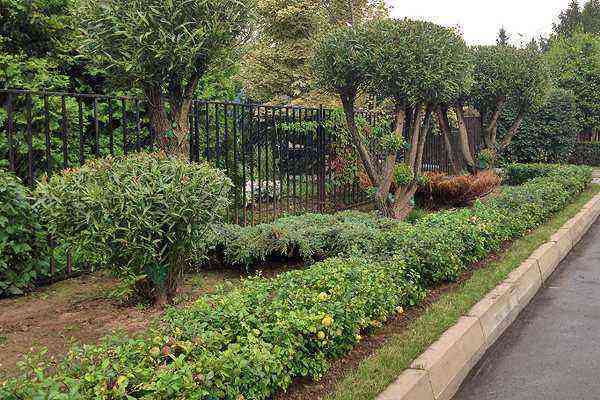
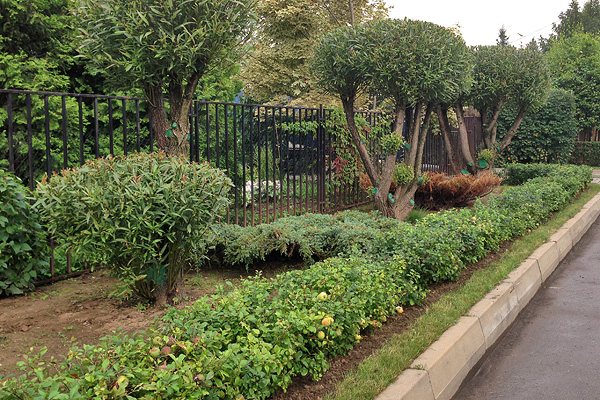
Henomelis hedge
Watering and feeding. On the eve of strong night autumn frosts, it is advisable to moisten the soil under the young bushes. After harvesting the fruits, I wash off the dust from the leaves that has accumulated over the summer with a strong jet. The last watering occurs at the end of October – November (weather permitting). It must be done in time before the cold pre-winter comes.
In September, I feed Japanese quince with potassium-phosphorus fertilizers. Along the way, I loosen the soil under the bushes and add well-decomposed compost.
Warming for the winter. The unpretentiousness of the Japanese quince increases with age. Young plants are less resistant than adults. I remember how I carefully mulched the soil under the young bushes. She covered them with spruce branches, covered them with snow. And they, all the same, managed to freeze the tips of the branches. With mature bushes, the hassle is less. They have already built up a solid root system, a guarantee of their recovery.
If only a few chaenomeles bushes grow on the site, and there is little snow in winter, then before the beginning of winter in tall forms it is advisable to bend all flexible branches to the ground. There is no need to be afraid that some of the shoots will freeze. They are cut in the spring during the thinning and formation of the chaenomeles. Young shoots soon appear, thanks to which the plant quickly recovers. Low-growing and creeping forms often have an extended arrangement of most of the branches, so even a small layer of snow completely covers the bush.
The overgrown Japanese quince, caught in the snow, can endure even severe frosts. The larger the snowdrift, the better. They say that young Japanese quince bushes are a treat for hares. Therefore, where they are, it is better to cover the chaenomeles with spruce branches.
Reproduction of chaenomeles. Japanese quince reproduces by root suckers, layering, cuttings (summer), dividing the bush and seeds. The lower branch, accidentally sprinkled with earth, takes root and gives rise to vertical shoots. In place of a dug up adult bush, young shoots will appear for a long time from the roots left in the ground.
I’ve always liked Japanese quince. The decision to make a hedge from this wonderful plant came after I saw how easy and fast chaenomeles reproduces. Sowing seeds from several fruits in the winter yielded many seedlings as early as the next year. A year later, I had excellent planting material, which was enough to start a hedge. It remained to transplant the seedlings from the garden to a permanent place. Of course, valuable forms of quince (with double flowers, rare color, etc.) have to be propagated vegetatively (summer cuttings, root suckers, layering or dividing the bush). Freshly harvested seeds are sown in autumn, stratified in spring.
Japanese quince harvest
Quince processing. Common quince
Its frost resistance is lower than that of apple and pear, it grows and bears fruit successfully in the presence of average annual temperatures from 6,7 to 9 °. Moisture-loving, not picky about location and soil, prefers moist, clayey soil with an admixture of sand.
Planting and care Quince varieties are mostly self-fertile, therefore, for normal fruiting, it is necessary to provide for the joint planting of several zoned varieties capable of pollinating each other. Quince propagates by grafting, layering, seeds, but mainly propagation is carried out by layering. To do this, grooves with a depth of 0,75-1 cm are made near the mother tree at a distance of 15-20 m. Well-developing annual shoots are laid at the bottom, pinned in places where they bend, after which the groove is covered with damp earth, and the tops of the retracted shoots are tied to a peg so that they develop vertically. Care for layering consists in loosening the soil and periodic watering. The main elements of the soil maintenance system in fruit-bearing quince orchards are: black fallow, short-term tinning and black fallow. Young quince trees respond well to fertilization. After 2-3 years, 2-3 kg / m2 of manure should be applied, and in the intervening years – nitrogen, phosphorus, potassium, 9-12 g of active principle per 1 m2. The main fertilizer is applied in the fall before the autumn digging, nitrogen nutrition – in the first half of summer, phosphorus-potassium – in the second. Quince trees need water supply both in warm and cold seasons. With each watering, water should be given as much as it is needed in order to well moisturize the entire soil layer in which the main root system is located. Young trees are watered more often – 8-10 times, intervals between waterings 15-20 days. When pruning, all sick, dying branches, as well as shoots growing inside the crown, are removed annually. Root shoots are removed regularly.
Japanese quince blank recipes
Chaenomeles is a champion in vitamin C and organic acids. It is often referred to as the northern lemon. Lemon or greenish-reddish fruits can be round, ribbed, oval or pear-shaped. Harvests of Japanese quince for the winter preserve its wonderful aroma and vitamins. In addition, the fruits contain a lot of pectin.
After eating any Japanese quince, be sure to rinse your mouth with clean water or brush your teeth. This is a preventative measure to keep the acid from eating away at the enamel.
The tissue of the fetus is very dense and hard. Moreover, it is incredibly sour. It is impossible to eat a raw “apple”. The slices are placed in the brewed tea to give the drink a lemon scent. Preparations for the winter are useful and tasty: compotes, syrups, preserves, marmalades, jams and chopped fruits mixed with granulated sugar.
Japanese quince seeds. The seeds are not thrown away. Infusion of Japanese quince seeds helps with colitis. For this, a spoonful of seeds is poured with boiling water, kept for 8 – 10 hours and drunk during the day (3 – 4 times) for a third of a glass. This infusion is used to wash the eyes (in case of infection and irritation) and rub the “problem” skin.
Read also Alyssum rock gold placer growing from seeds
Japanese quince with sugar. Finely chopped ripe fruits with sugar are an excellent source of vitamin C in winter. The mass or syrup can be diluted with water and a healthy refreshing drink can be drunk. The sweet and sour mixture is added to the curd, spread on pancakes or slices of white bread.
Fruits (pitted), cut into larger pieces and covered with sugar, have a sweet and sour taste. They can be added to tea instead of lemon. The amount of sugar is about 1,5 kg of granulated sugar per 1 kg of prepared fruits. When stored in the refrigerator, the amount of sugar can be reduced to 1 kg. Preserving allows even less sugar to be used.
Japanese quince juice. If you fill the crushed chaenomeles fruits with sugar (taken in a proportion of 1 part of crushed pitted fruits per 1 kg of granulated sugar), then after two weeks sweet juice will begin to stand out. It is drained and used as a concentrate for a vitamin drink. It is better to keep the chaenomeles juice syrup in the refrigerator.
Japanese quince jam. You will need: 1 kg of peeled fruits, 1,5 kg of sugar and 1,5 glasses of water.
The fruits of the Japanese quince are washed, pitted and removed from hard films, and then cut into thin slices. They are boiled in water for 10 minutes. The broth is used to prepare syrup, which is poured into slices and kept for several hours. Then it is boiled in one or more steps (boil for 5 minutes, then leave for 4 – 5 hours). As a result of cooking, the slices become almost transparent. Fragrant sweet and sour jam from Japanese quince turns out to be golden-pink in color. It is cooled and covered with paper. Can be poured hot (“off the fire”) into clean jars and rolled up with lids.
Spices are sometimes added to chaenomeles jam (nutmeg, cardamom, cinnamon, etc.). Can be cooked with apples or chokeberry (black chokeberry). The gourmet will love the Japanese quince jam with nuts. But it is not worth replacing sugar with honey, since honey becomes a “poison” when heated strongly.
Candied Japanese quince. Candied fruits from Japanese quince are delicious if the fruits, cut into pieces, are cooked like jam, but always in several stages. It takes longer to stand each time, at least 10 hours. The amount of water is therefore increased to 3 glasses. At the end of cooking, the slices are thrown back on a sieve and then dried. The syrup is used for dilution with water.
Japanese quince marmalade. This delicacy, rich in pectins, is prepared as follows: they clean the washed fruits from seeds and hard plates, boil (preferably baked in the oven) until soft, then grind with a blender or rub through a sieve. Sugar is added (1 kg of granulated sugar is taken per 1,3 kg of mass) and cook over low heat until the mass becomes viscous. All this time do not leave the stove, because the prepared marmalade burns easily. As soon as the mass becomes viscous, it is laid out on a baking sheet or a flat plate moistened with water. After a while, when the marmalade has cooled, it is cut into pieces and sprinkled with powdered sugar on top.
Japanese quince compote. Many people like this particular option for harvesting chaenomeles fruits for the winter. Prepared fruits are cut into slices (or pieces of any size), placed in clean glass jars and poured with hot syrup. It is prepared on the basis of: 1 liter of water needs at least 0,5 kg of sugar. After pasteurization (20 minutes for liter jars), the jars are rolled up using lids designed for sour fruits. My friends summer residents do without additional sterilization of the compote. They pour boiling compote into jars, after which they are rolled up and wrapped in a blanket until they cool.
Dried fruits of chaenomeles. Dried fruits, cut into thin slices, are brewed in a thermos in winter along with rose hips and hawthorns. During a flu epidemic or with a cold, be sure to add dried blackberry leaves to them.
Liqueurs, liqueurs and liqueurs are made with Japanese quince. Vodka is insisted on it. Japanese quince juice can be added to vodka and infused for a couple of weeks.
A valuable fruit crop is the Japanese quince. This is a representative of the Rosaceae family. The more famous representatives are apple and pear trees. Quince is widely used in the preparation of delicious dishes and preserves, is a prophylactic against certain diseases. It has a healing effect on the gastrointestinal tract, liver and skin.
Recently, it has become more and more popular. On personal plots, it can be found quite often. In order for it to grow healthy and please with a good harvest, you need to follow certain rules for care.
Quince: harvesting and storing crops
The fruits of the common quince practically do not grow all summer and begin to fill only at the end of August. They are not afraid of frost, so harvesting should be done at the end of October, allowing them to ripen well. For long-term storage of the harvest, the quince is harvested manually, cutting or removing the fruits, preventing them from falling.
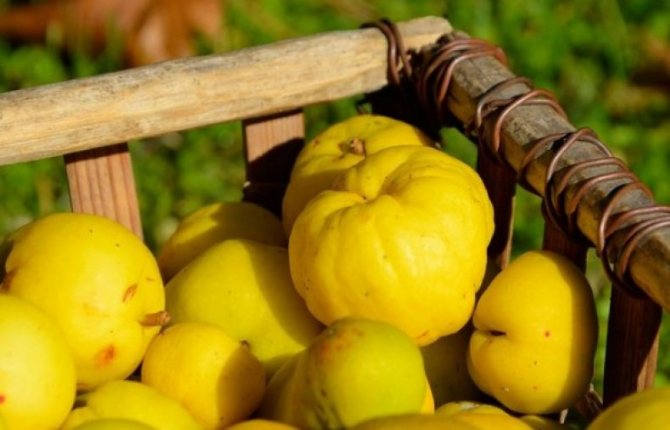
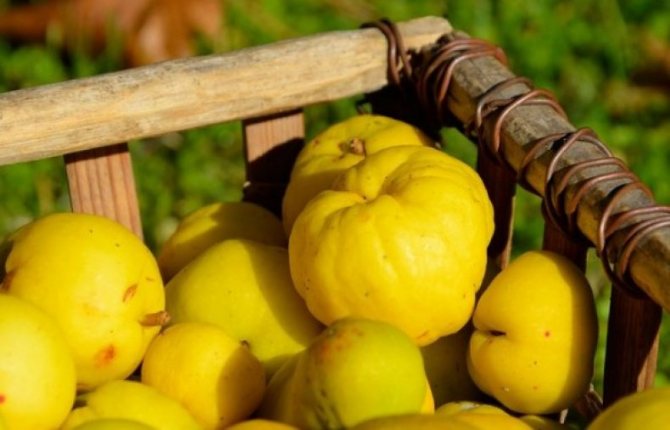
The quince is stored all winter at a temperature of -2. – 5 ° C. In autumn, quince fruits are very hard, slightly juicy, tart, with a sweetish taste. They are not eaten fresh in food, but very tasty and aromatic jams, preserves, compotes, marmalade are prepared. Quince slices can also be added to tea instead of lemon. During storage, the fruits become more juicy, softer and sweeter.
Quince is the perfect tree for your garden. It is not only useful, but also very decorative: its foliage is not susceptible to diseases and remains beautiful all summer, and in the fall it acquires a bright yellow color and falls off late. This plant is also a good honey plant.
Features of the variety
Japanese quince is an ancient plant variety. Its age is about 4 years. She began her journey across the land from Central Asia and Transcaucasia, but she was ranked as cultural only in the Greek territory. Currently, it is widespread throughout Russia, but the most favorable places for it are the southern regions of the country.
For cold climates, certain varieties have been bred that are immune to frost and cold weather.
The fruit of the Japanese quince is visually similar to a pear, but the skin is covered with a fine and soft fluff. The appearance of small red spots is also acceptable. The Japanese woman begins to gain color during the May holidays, and the fruits ripen at the end of September. Jams, candied fruits, marmalade are made from it.
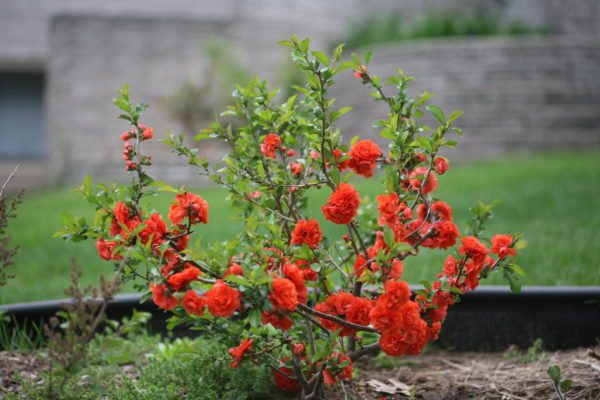

- potassium;
- calcium;
- phosphorus;
- iron;
- sodium;
- magnesium and many other elements.
It can reach a height of five meters. Care, pruning and yield directly depend on the age and type of the tree. Basically, Japanese quince bears fruit for about 35-40 years.
All about giving
Quince is a plant that needs warmth. She feels comfortable in areas with mild climatic conditions, but it may well adapt to cooler regions. But with severe frosts below thirty degrees, the quince bush may well freeze. The Japanese planting quince plant and outdoor care, which we will consider today, is mainly grown for the purpose of decorating the site.
The plant is considered a wonderful ornamental tree, enchanting anyone with its appearance. The secret of attractiveness lies in the fact that the bush is able to retain its appearance for a long time, blooming in spring and bearing fruit until the end of the autumn season.
The life span of a plant is more than a dozen years. This makes it possible to plant and grow a wonderful garden decoration for many years from one time.
Planting quince in autumn
To plant Japanese quince in the fall, you need to purchase a seedling 12 months old. The roots of the tree must be closed. In the case of planting older seedlings, you should also pay attention to its root system. It must be open type. This is necessary in order to detect disease and pests in time. She has a massive root system – this should be taken into account when planting her on a site. It is planted at a distance of at least five meters from other shrubs, trees and outbuildings.
It grows on fertile, loose and light soils. The acidity level should be neutral. This is a plant that loves sunlight, that is, it must be planted in the brightest and sunniest place on the site. When choosing a landing site, it is worth considering that the quince does not like drafts and cold winds.
The site for planting Japanese quince begins to prepare in the spring months. It all starts with the introduction of fertilizers and nutrients into the soil. Calculation (per square meter): 50 grams of superphosphate and 20 grams of potassium salt. Then you need to dig up and water.
14 days before planting, it is necessary to dig a hole, the depth of which is 0,5 meters, and the radius is 25–45 cm. The width of the hole will be the same as the root system of the quince. Before planting, poured into the hole:
- clay;
- nutrient mixture from garden soil;
- superphosphate 150 grams;
- ash tree 50 grams.
Read also Primrose seed growing when planted
Then a stake is driven in, which will ensure the stability of the trunk. On top of the substrate prepared in the hole, the root system is carefully laid. After that everything is covered with soil and trampled down. After planting, the tree is watered. One seedling requires a couple of buckets of water. Now they make a garter of quince by the trunk to the stake, which was dug in initially. In order to keep the soil moisture as long as possible, sprinkle the ground with peat or humus.

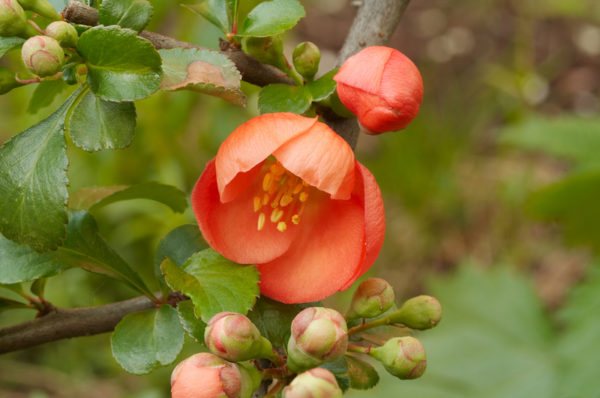
Warming before the beginning of winter
In the suburbs and other cold regions of the Russian Federation, where there are severe frosts, manure lining is not enough. Japanese quince differs in that the root system of both the shrub and the tree is located very close to the soil. Therefore, she needs not only additional care in the fall, but also special insulation.


To protect the quince, cover the root area with spruce branches, wrap the lower part of the trunk with spunbond or lutrasil, and on top with spruce branches again. Such an insulation system will effectively protect against frost and help protect the shrubbery from freezing.
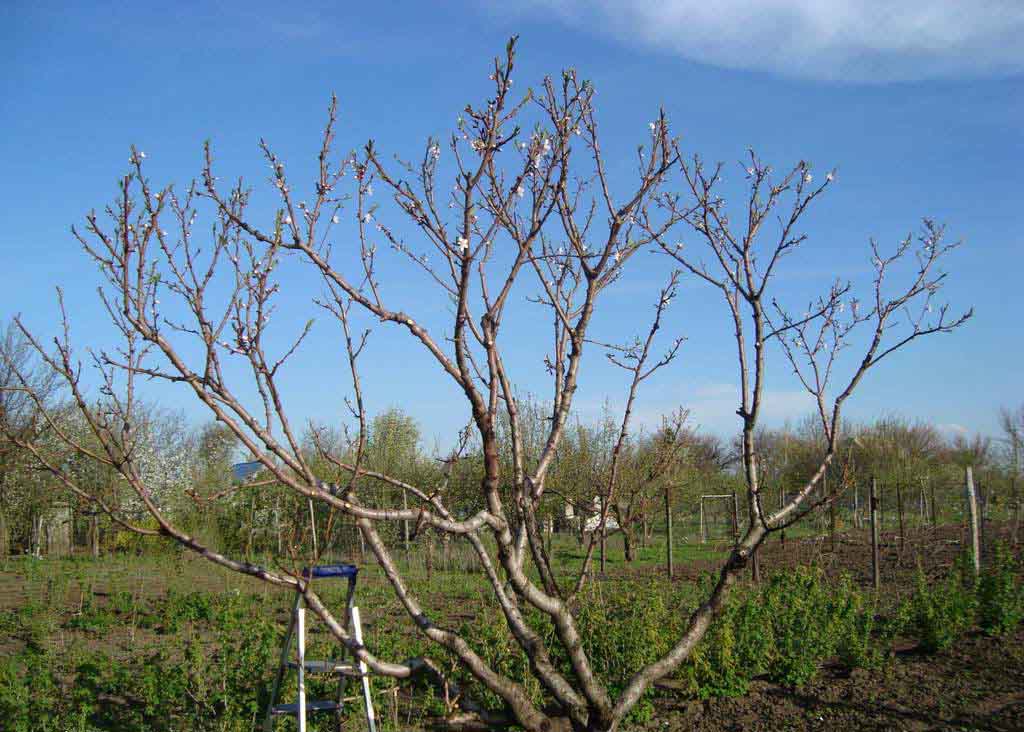
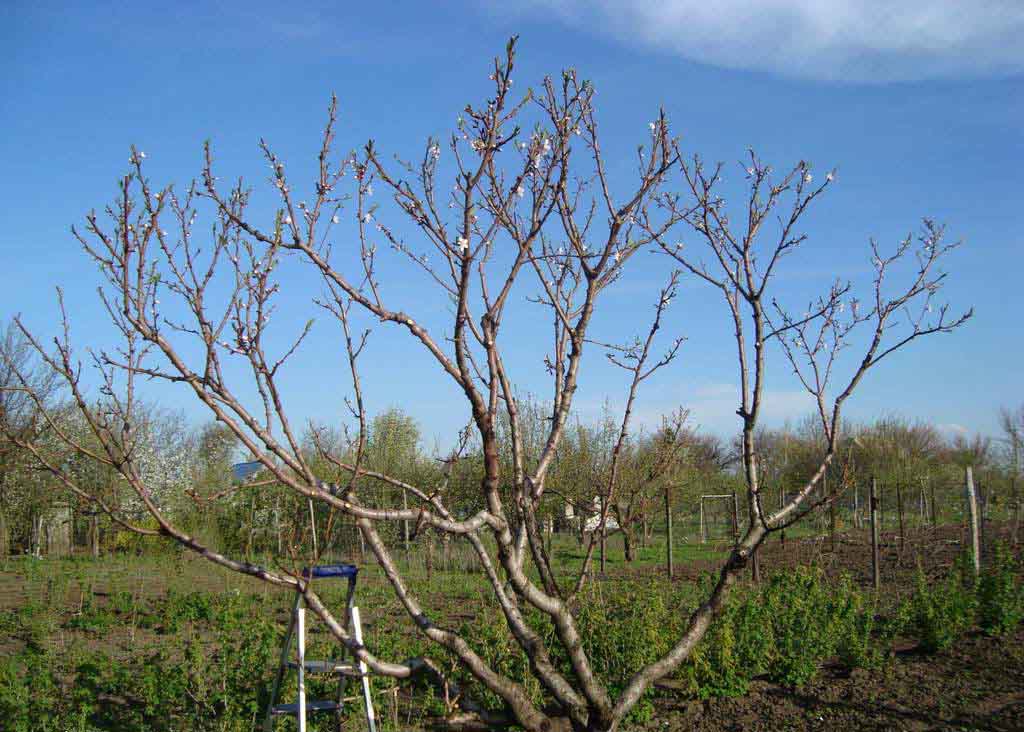
Japanese quince is unpretentious and resistant to more diseases, and if comprehensive care is carried out in autumn and spring, young seedlings grow stronger and quickly grow into a full-fledged tree. It requires minimal maintenance and is not a hassle even for novice gardeners.

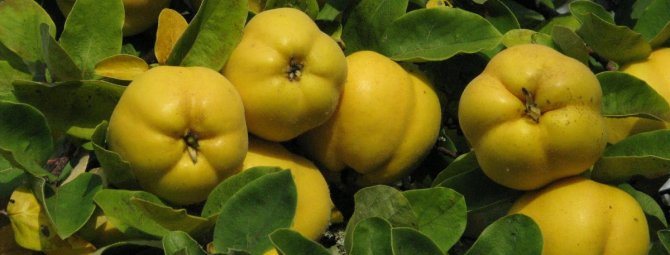
The history of quince has more than four millennia. The Caucasus is considered the birthplace of quince. Here it is widespread in the wild: it grows on the banks of rivers, glades and forest edges, and rises into the mountains to a level of 1400 meters. Its habitat is also Northern Iran, Asia, Australia, America, the African continent in temperate latitudes.
Growing rules and care
So that your efforts in growing quince are not in vain, and the harvest is pleasing every year, you should follow a few simple rules for caring for the tree:
- The area where the Japanese woman is planted should be well lit, since it is a light-loving plant.
- The soil should be light, sandy loam, loamy or wood – podzolic. Acidity below pH5.
- The planting site for seedlings is chosen on the southern side of the site.
- Drafts and severe frosts are absent.
- In cold regions, Japanese quince is sheltered for wintering. For this, the soil around the trunk is covered with fallen leaves, spruce paws or sawdust. The crown is covered with cardboard or wooden boards. Also, an excellent option for protection from cold weather would be to cover the trunk with snow.
- If the summer is dry and a little rainy, then watering is carried out at least six times per season. The first watering occurs before the tree begins to bloom. Second, after this process. The third is after the flowers have completely fallen off. The fourth is carried out when there is an active growth of shoots. The fifth watering is 21 days after the last one. And finally, carry out the last watering when the period of fruit ripening begins.
Reproduction by cuttings
Quince cuttings are best taken in early summer. A stalk with two or three internodes is cut from a strong shoot. The cut shoots must be kept in a solution of a root growth stimulator for a day or their lower cut must be dipped in powder.
After processing, the cuttings must be planted in boxes with three parts of sand and one part of peat. They must be placed at an angle. Before germination and appearance of leaves, cuttings must be covered with any transparent material (polyethylene, glass).
Another breeding option is to use basal cuttings taken from the base of the stem with some root tissue. They must be planted immediately in deep pots. Next year, the cuttings will already have a sufficiently developed root system for planting in a permanent place.

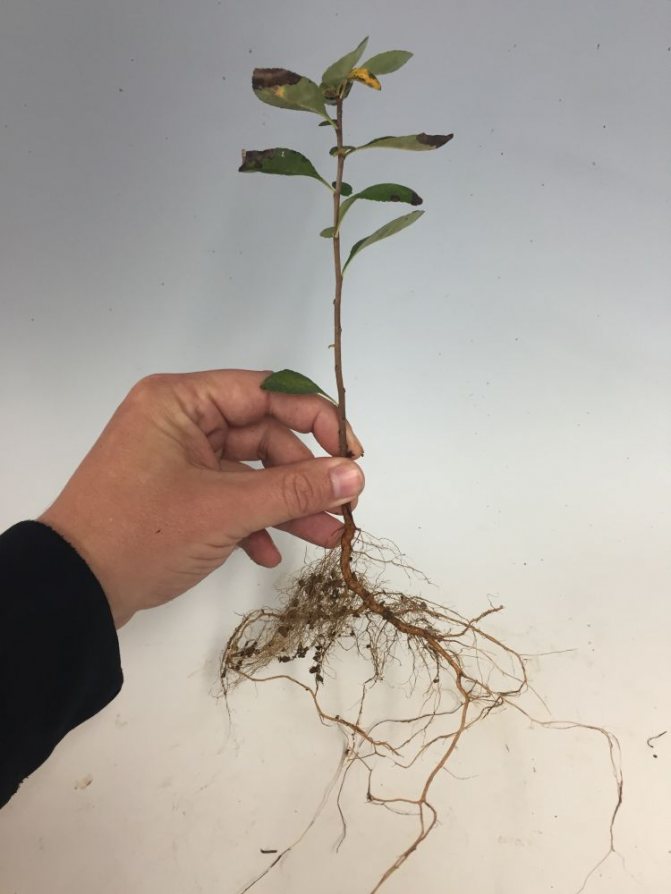
Features of the growth of quince
The Japanese quince is characterized by the appearance of many shoots (more than 1 meter in length). Such active growth occurs in the first years of the tree’s life. Their growth becomes slower during the fruiting period. The places where the ovaries form may vary. This is influenced by the type of tree.
Fruiting on young trees and undersized varieties occurs on long annual growths. The rest of the representatives bear fruit on the branches. Such branches grow for a single year and are generative. They can be harvested for five to ten years. The main branches are evenly distributed along the trunk, sunlight should freely penetrate into the entire crown.
Planting young plants
In order to plant quince in the spring, the soil must be prepared in the fall. All weeds must be carefully removed and the area kept under black steam until planting. If the soil is infertile or heavy, a mixture of two parts of leafy soil and one part of sand should be added to it. It is also recommended to add peat-manure compost, phosphorus and potash fertilizers. The depth to which these components are introduced should be 10-15 cm. Due to this, a loose water and air permeable soil horizon is created.
The best time to plant a young chaenomeles is after the soil has thawed. However, you need to be in time before the buds begin to bloom. The plant can be planted in the fall, when all the trees begin to shed their foliage. However, there is a danger that when planting at such a time, the heat-loving quince will not have time to take root and will die from the cold.
It is good to plant a biennial plant that was previously in a container and has a closed root system. Such bushes take root and grow better. Single shoots are planted in pits, the diameter of which should not exceed half a meter, the depth of the planting pits is 50-80 cm. They are filled with humus, superphosphate (300 g), potassium nitrate (30 g) or ash (500 g) are added.
When planting a group of plants, the distance between them should be at least one meter.
When planting, the root collar should be at ground level. The root should be completely underground: its exposure occurs if the plant was not planted correctly, and the root collar was above the soil level. If the root collar is below the soil level, this will slow down the growth of the shrub.
The Japanese quince does not tolerate a transplant. and in one place it can grow well for 50-60 years.


Pruning quince in the fall: scheme
During the pruning procedure in the fall season, the most important thing is that the tree must be pruned so as to cause minimal harm to it. There is a certain scheme for this.
In order for the pruning of Japanese quince in the fall to pass safely, and the tree to grow and bear fruit perfectly, you need to remember one thing! The more light, the more abundant the harvest will be.
At five years old, Japanese quince should have the following parameters:
- the tree reaches a height of at least 0,6 meters;
- lateral main branches of at least ten pieces;
- the angle between the main branch and the trunk is 45 degrees.
The crown of the quince should be in the form of a bowl. The greenery is evenly spaced so that the light penetrates all the shoots of the tree equally.

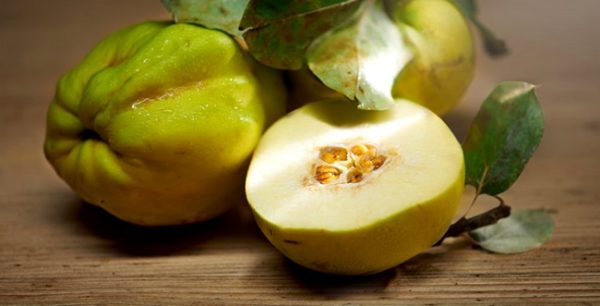
Young quince is pruned regularly. It is at this time that the crown of the tree is formed. After reaching the age of six, the number of trimmings is reduced and carried out only when necessary.
- In the first year of growth, you need to cut the quince in order to form the upper tier of the main branches. The distance between them is seven buds. One tier contains five shoots. They should be directed in different directions, and the distance is about 12 cm. Also, at this age, the second tier of the crown is formed in the tree. The distance between the first and the second is about 40 cm.
- In the second year of life, the branches of the second tier are cut off by 0,5 meters. The main task for the gardener is to form the third tier. Since this is the basis of a mature tree. All branches are pruned 0,5 meters.
Read also How to plant Cryptocoryne in an aquarium
Planting a plant and preparing for it
The place for the chaenomeles in the garden is chosen immediately and forever. Due to the structure of the root system, the plant tolerates transplanting very poorly. In adult specimens, it is almost impossible to carry out it without irreversibly damaging the root. Japanese quince will take root in the shade, but abundant flowering and fruiting is possible only if you place it in an open sunny area. It is also advisable to protect the plant from drafts by planting so that a natural or artificial barrier would cover it from the north.
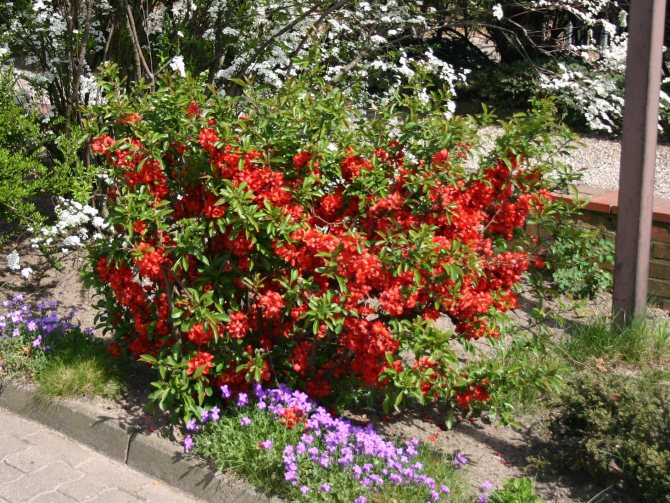

Chaenomeles flowers and bears fruit profusely only if it receives enough light and warmth.
Chaenomeles has no special requirements for the quality of the soil. The plant successfully takes root on both heavy clay and poor sandy substrates. But the ideal option for him is moderately moist, nutritious soil with good aeration. Chaenomeles’ only requirement relates to the acidity of the soil. It should be in the range of 5.0–5.5. You can “acidify” the substrate using pine needles or sawdust, a solution of citric or acetic acid. In alkaline soil, chaenomeles practically does not grow, the leaves become smaller and “fade” due to chlorosis. He also categorically does not tolerate saline substrate.


Needles are one of the most common means for “acidifying” the soil
You can plant a plant both in autumn and spring. The first option is more popular in areas with a warm subtropical climate, the second – in central Russia, in the Urals, in Siberia. When planted in spring, a thermophilic plant is guaranteed to have time to adapt to the changed conditions of existence before the cold weather sets in.
In any case, the planting hole is prepared in advance, from autumn or about three weeks before the planned procedure. Its average depth is about 50 cm, diameter is 55–65 cm. The fertile turf extracted from it is mixed with humus or rotted compost in approximately equal proportions and fertilizers are added – simple superphosphate (80–100 g) and potassium sulfate (50–70 g ). You can replace them with ordinary wood ash (liter can). If groundwater is located under the soil closer than 2 m, a drainage layer up to 10 cm thick is desirable at the bottom of the pit.

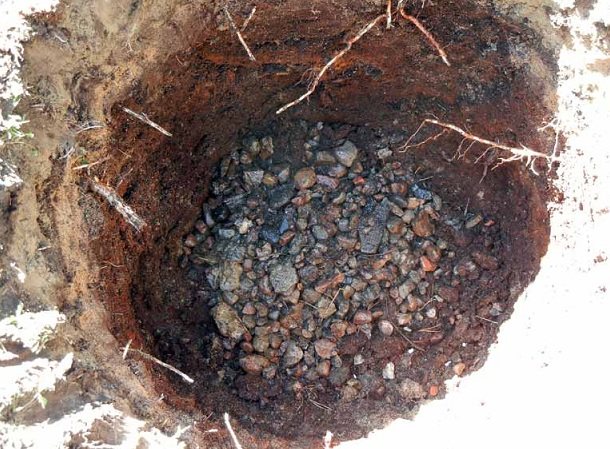
Chaenomeles has a negative attitude towards moisture stagnation, therefore, drainage is desirable at the bottom of the planting pit
Two-year-old seedlings show the best adaptability. Planting chaenomeles in the ground is no different from a similar procedure for other garden trees and shrubs. The most important thing is not to deepen the root collar. It is located 4–5 cm above the ground. There is no need to tie a bush to a support, it is enough to compact well and water the soil abundantly (10-15 liters). To stimulate intensive branching, existing shoots are shortened by two-thirds.
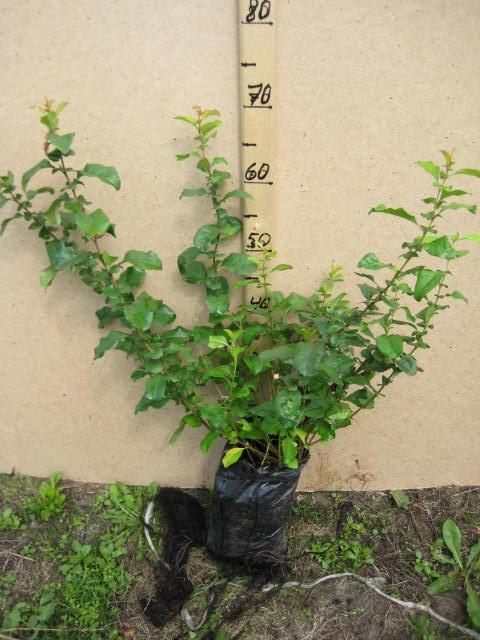

If you have a choice, it is better to purchase a chaenomeles seedling with a closed root system, they have less root damage during transplantation.
When planting several plants at the same time, the recommended interval between them is about one and a half meters. When forming a hedge, the distance is reduced to 50–55 cm. Planting several varieties of chaenomeles next to it contributes to an increase in yield. It belongs to crops with cross-pollination.
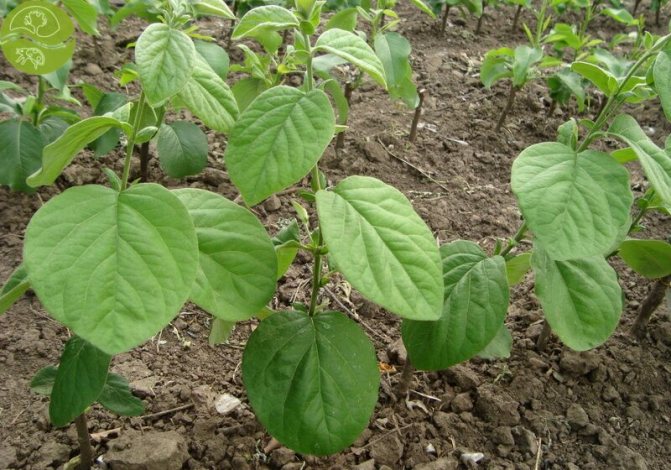
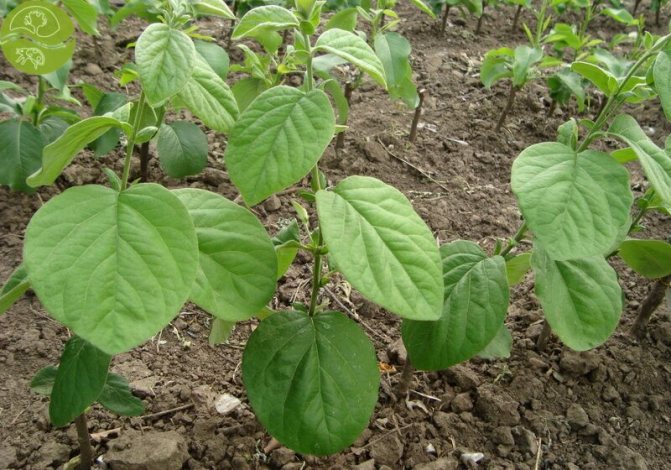
Chanomeles seedling spacing varies depending on how the plants will form
Pruning tools
In order to produce high-quality pruning and not cause a lot of damage to the Japanese quince, the equipment must be sharp, free from rust, and be in a clean and excellent condition.
For the pruning process itself, use:
- Pruner. They cut off branches, the diameter of which is 24 millimeters. Visually, this tool is similar to pliers. There are pruners with two types of sharpening – one side and two. There are a lot of species. But they all have rubber grips that reduce the sliding of the tool in the hands.
- Knotting tool. It has long arms. It copes well with pruning thick branches (diameter up to 49 mm) and plants with thorns, thorns. This tool has large dimensions, but it is much more convenient to work with it than with a pruner.
- Hacksaw. It helps to get rid of dry branches of various sizes. Blade – carbon steel, rubber grip. The weight of the inventory should be light.
- Garden saw. They are used to cut live branches, as they do not leave chipping.
- Gardening scissors. The blades are slightly longer than those of metal scissors. They are used to trim small branches and bushes.


Diseases and pests
- If various types of spots appear on the leaves and fruits of quince – this is most likely due to the fact that in wet and humid weather the plant can infect fungal diseases that lead to necrosis, the leaves are deformed and dry out. For example, in the fight against brown spot (necrosis), spraying with a solution consisting of copper sulfate (100g) and water (10l) will help. There is also a safer option: to insist a decoction of onion husks (150g / 10l of water) for a day.
- Ovaries die (fall off) – fungal infection. The mycelium can calmly overwinter in dried fruits and infected leaves, where brown spots appear, which, growing, cover the entire surface of the leaf plate, and during flowering, the spores of the fungus enter the young ovaries, destroying them.
Prevention of diseases of quince
As you know, it is better to prevent diseases than to deal with their consequences, therefore the best treatment is prevention.
To do this, in late autumn, when the harvest has come to an end, it is necessary to collect dried fruits, broken and dried branches in order to avoid the death of ovaries, brown spots and leaf-dominating moths.
As soon as the buds swell in the spring, but before flowering, the bushes are treated with a 0,1% solution of foundationol and 0,15% solution of Dipterex. In the fight against decay of the ovaries, spraying is carried out during flowering with a 0,08-0,1% solution of foundationol.
If you adhere to all the recommendations for caring for quince, then the harvest will be rich in fragrant and juicy fruits, from which you can make jelly, marshmallow, preserves, syrups, liqueurs, jams, compotes. From dried fruit slices, you can make a delicious dried fruit compote. The most popular is the preparation of quince jam.
Ways to rejuvenate a tree
Thanks to constant pruning, the fruiting period of quince can be increased to fifty years. It is this process that leads to the rejuvenation of the tree. It goes like this:
- Branches that are three years old are pruned.
- Shoots that were formed at the age of 4–7 years are removed.
- If deep trimming occurs. It is necessary to remove branches that were formed at the age of 10 to 12 years.
- The main thing is that the rejuvenation of the Japanese quince occurs only if 2/3 of all branches are removed.
Japanese quince or Chaenomeles is naturally endowed with unforgettable beauty, and the fruits are good for human health. She can deservedly take an honorable place in any orchard. With proper care and attention, the first harvest can be obtained within 3-4 years after planting in a new place. To grow a fruitful tree, you need to adhere to all the rules. Then the yield of the tree will be high, and the fruits will delight with their unforgettable taste.
To begin with, it should be clarified that this fruit crop is called quince conventionally, meaning by this a plant of the genomeles genus, which occurs in four species. Chaenomeles is similar to quince only in the appearance of the fruit, the density of their pulp and a special aroma. Given the prevalence of these terms, let us agree to refer to the culture by both names in this publication.
Reproduction of this amazing shrub is easy to carry out by planting seeds from ripe fruits and then growing seedlings. The seeds of the Japanese quince are planted in rows in rows, without worrying about the distance between them, since in the future, the mature seedlings will still have to be transplanted. The optimal distance between the planted seeds is considered to be a distance of 20-25 cm.
It is better to plant Japanese quince before winter – so that the seeds have time to undergo natural stratification, which stimulates their germination. Before the onset of cold weather, a bed with rows of planted seeds should be insulated with a layer of rotted manure about 3-5 cm thick.
The first shoots of Japanese quince, reproduction of which was carried out by seeds, gives in the spring. During this period, young plants need to be fed with infusion of mullein diluted in water (1:15) or bird droppings (1:20).
Saplings dive into a bed prepared in advance with loose soil, as soon as they have 2-3 pairs of well-formed leaves.
It is very important to determine in advance the correct planting site for Japanese quince. Experienced summer residents clarify that henomeles should be planted in those places where a thick layer of snow accumulates in winter, which will protect shrubs in bad weather. Besides, this place should definitely be well lit by the sun!
In the spring, the matured seedlings are moved to a new (but not yet permanent) “place of residence.” Previously, before planting, the soil in the selected area must be fertilized and dug up at a depth of 40-50 cm.
Plants are planted, observing the distance between the rows of 25-30 cm, and between the bushes themselves at 20-25 cm. The bed is watered abundantly, mulched with peat, compost or humus, and then metal frame arches are placed over it, on which the covering material is fixed. Plants need to stay in such a mini-greenhouse for at least a month and a half.
When 6-7 leaves are formed on the seedlings, you can start feeding them little by little. As a top dressing, a mixture of ammonium nitrate or urea and double superphosphate is used (based on 1 grams of each component per 10 square meter of garden bed). Fertilizers are applied between the rows, mixed with the soil and watered.
The second time the chaenomeles is fed, when about 10-15 leaves are formed on each of the bushes. Here, one should immediately answer the question that naturally arises among novice summer residents – how to feed the Japanese quince?
To do this, use the following mixture (the number of components is indicated per 1 square meter of garden area):
– 15 grams of double superphosphate;
– 30 grams of ammonium nitrate / urea;
– 15 grams of potassium sulfate.
Chaenomeles perfectly accepts feeding with infusion of bird droppings, which is allowed to be done at any suitable time (be careful: observe all the proportions indicated above so as not to destroy the plants!)
Preparation for winter
For wintering, the bushes should be insulated – for this purpose, they are covered with lutrasil (a special material made of polypropylene fiber) and additionally covered with snow on top.
Transfer to a permanent place
With the onset of spring, the matured shrubs are transplanted to a permanent place. Considering that this plant blooms unusually beautifully, it is allowed to plant it around the perimeter of the backyard territory (in the most illuminated areas), using chaenomeles as a hedge.
The pits for planting are made shallow, focusing on the size of the seedlings. The plants are dug up from their original place, their root system is slightly pruned, paying special attention to the taproot, and planted, keeping a distance between the specimens of 0,8-1 meter.
With the arrival of autumn, it is time to carry out formative pruning. Strongly regrown branches are shortened so that young shoots can fully develop. For the winter, the shrubs again need to be carefully insulated.
For about 3-4 years in the last days of May, the Japanese quince will be covered with its first red-orange flowers. This marvelous flowering period will last approximately 3-4 weeks, and in the fall, chaenomeles will delight its owner with the first harvest of juicy, fragrant fruits.
Of course, the entire process described from planting to harvesting can be significantly accelerated – if you start breeding and growing this crop not from seeds, but from seedlings and already formed young bushes.
Top dressing and watering quince at their summer cottage
Quince responds to abundant watering with an increase in yield. Therefore, during the growing season, the plant must be well watered at least three times: before flowering – for a better ovary, in June – for the development of the tree and fruits, at the end of summer – for pouring the fruits. For one watering, you need to use at least 400 liters of water, and for a large tree – up to 800 liters, so that the entire trunk circle is well moistened.
Common quince is also supportive of fertilizers and fertilizing. In the spring, when the soil is loosened, nitrogen fertilizers are applied along the trunk circle at 25-30 g per 1m², or complex mineral fertilizers at 50 g per tree. If it was not possible to fertilize the quince in the spring, then until half of the summer you can fertilize with nitrogen fertilizer, diluting 10 g of fertilizer in 10 liters of water (per one hole dug around the crown perimeter). You can also feed the tree with a slurry solution diluted in 5-10 parts of water.
After feeding, the quince must be watered abundantly so that the fertilizers are evenly distributed. In the fall, apply potash, phosphorus, 20 g per 1m² and organic fertilizers in the form of mulch along the trunk circle, and then dig up the earth on a half-bayonet of a shovel. Together with autumn and winter precipitation, these fertilizers will gradually penetrate into the soil and feed the quince.
Help in the first years of life, how to tie a quince correctly
You can purchase seedlings that are grafted onto the mother plant and will grow in the shape of a tree, although most often they grow as a bush.
In order for the quince shrub in your country house to have a beautiful vertical shape, it must be tied up when planting.
The support is installed on the bottom of the pit in which the quince is planted, and should be 1-1,5 m higher than the branches of the seedling. All branches must be tied to the support, and so that there is a small gap between them. As the seedling grows, the fasteners should be moved higher so that the quince does not tilt and break. When the seedling gets stronger and begins to bear fruit, the support is removed.
Features of pruning quince, how to do it right
With the onset of autumn, the plant does not shed its foliage for a very long time, therefore, it is better to prune quince in early spring, before bud break. All damaged and frozen branches must be removed. Also, for a good harvest, the growth of the last year should be shortened – branches up to 50 cm by 1/3, longer by 1/2, while vertically growing branches must be shortened. It is also necessary to ensure that the middle of the crown is not thickened and well lit, for which the excess branches are completely removed.
Reproduction of quince
It is quite easy to propagate quince, and this can be done in different ways. Reproduction by cuttings and root shoots will be the easiest. Cuttings for planting are cut in the spring, when the leaves are already in full bloom. Annual cuttings are ideal for the role of planting material, preferably from the lower branches of the tree, which can be specially left when pruning. For planting, there should be 5-6 buds on the handle (the lower cut is made immediately under the kidney, and the upper one – at a distance of 2-3 cm from the upper kidney, so that the kidney remains alive when the cutting dries up). Leaves on the handle are completely removed.
The cuttings are deepened into the prepared dug-up earth by about 2-3 buds. To make the survival rate of cuttings higher, you can cover them with a film by building a small greenhouse. After 20 days, the cuttings will take root and in the fall they can be transplanted to a permanent place.

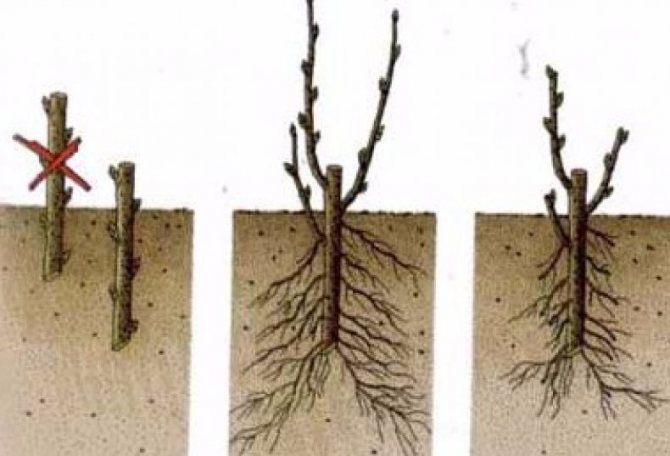
The root shoots are cut with a small piece of bark so that the root remains intact. This procedure can be carried out both in spring and in autumn, and when planting a seedling, the central root is often shortened so that the lateral roots begin to develop faster, and the leaves are removed (except for the upper ones). For such seedlings, a little shade is needed.
For reproduction by layering, in the autumn, it is necessary to bend the lower branches, and after cutting the bark, cover it with earth. In the spring, roots are formed in the places of the bark incision, and in the fall the layers are separated from the mother plant and planted separately. Quince reproduces not badly with the help of grafting. Good varietal cuttings can be grafted onto already growing trees in the spring, when intensive sap flow begins. On annual seedlings, quince is grafted with a bud (eye), and this method of grafting can be carried out in the summer in July-August.
Seed propagation is the longest process of growing quince. When propagated by seeds, the varietal characteristics of quince may not be preserved, however, such seedlings have a well-developed root system and grow quickly, therefore they are often grown as a stock for varietal cuttings.
Seeds for planting must be collected from ripe fruits, washed well from mucus and dried. Before direct planting, they are stratified for 2-3 months. In the fall, the seeds can already be sown in open ground, then the stratification will be natural and in the spring sprouts will already appear. Moreover, seeds can be laid for stratification at the beginning of February and also sown in open ground at the end of April.
During the growth of seedlings, they must be transplanted twice: for the first time, plants with two real leaves are dived (they are planted at a distance of 5 cm from each other), the second time it is necessary to transplant seedlings about a month after the first planting (at a distance of 17-20 cm). In the second year of the growing season, they can be planted in a permanent place or used as a rootstock.
Cultivation at home
In terms of dimensions, chaenomeles is quite suitable for growing at home. You can even form bonsai from it. For regular flowering and fruiting, he only needs good lighting and a fairly light, but nutritious soil. The tub in which the Japanese quince is planted should be deep and voluminous. The plant has no special requirements for humidity and air temperature.


Chaenomeles does not differ in size anyway, but at home it can still be “miniaturized”
Caring for chaenomeles at home differs little from caring for it in the garden. The plant is watered no more than once a week, top dressing is applied every 15–20 days. Japanese quince reacts positively to both mineral fertilizers and natural organic matter. For the winter, it sheds its leaves, so it is advisable to provide a dormant period by lowering the temperature of the content to 8–10 ° C, reducing watering to once a month and completely abandoning fertilizing. The lighting remains the same as in summer.
Plant crown formation
Pruning for adult chaenomeles aged 4–5 years and older is an annual procedure, as thin shoots break easily and become tangled. It is carried out in the spring, before the start of sap flow, but always at above-zero temperatures. The plant tolerates the procedure very well. Autumn pruning often provokes the complete freezing of the Japanese quince.
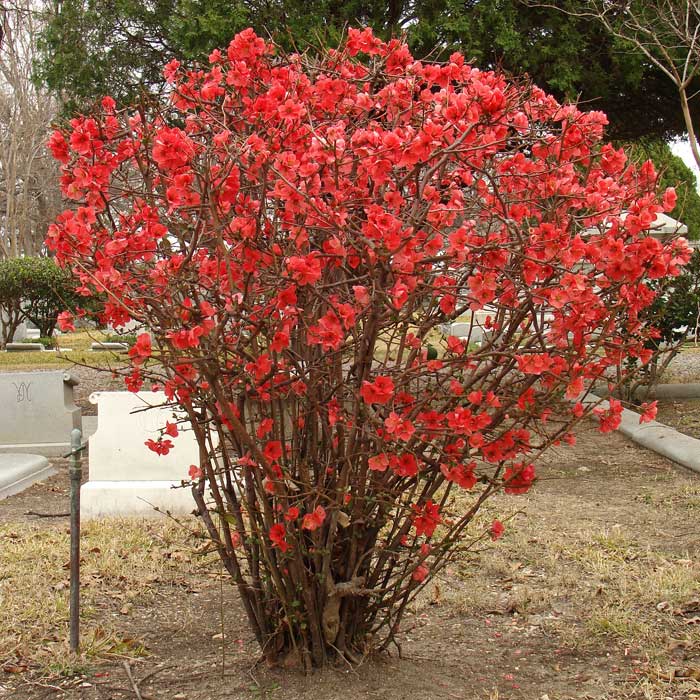

The chaenomeles bush, pruned annually, looks very neat and bears fruit more abundantly
Pruning begins with the fact that all dried, frozen and broken branches under the weight of snow are removed to the point of growth. They also do the same with those that lie on the ground, and with those located vertically. Be sure to leave horizontal or close branches at a height of 25-50 cm from the soil surface.
On an adult plant, 15–20 fruiting shoots are left at the age of one to five years. The number of “uneven” branches should be approximately the same. Three-year branches are the most productive in chaenomeles. All shoots over five years old are removed by anti-aging pruning. They won’t harvest anymore. Once every 8–10 years, the bush is cut off radically, leaving 10–12 healthy and strong shoots no older than three years. This will help prolong his productive life.
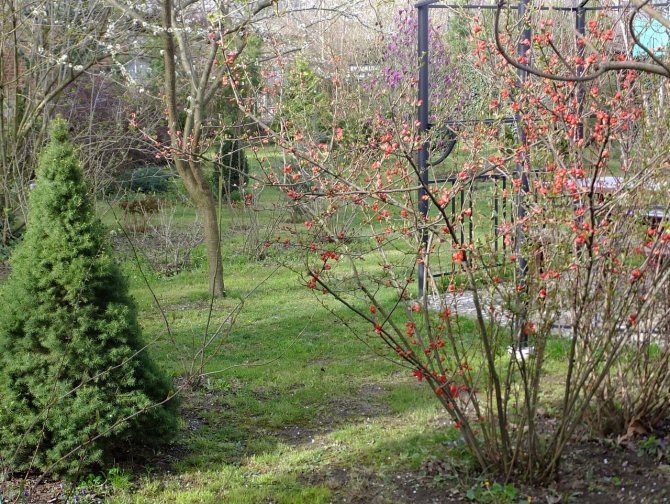
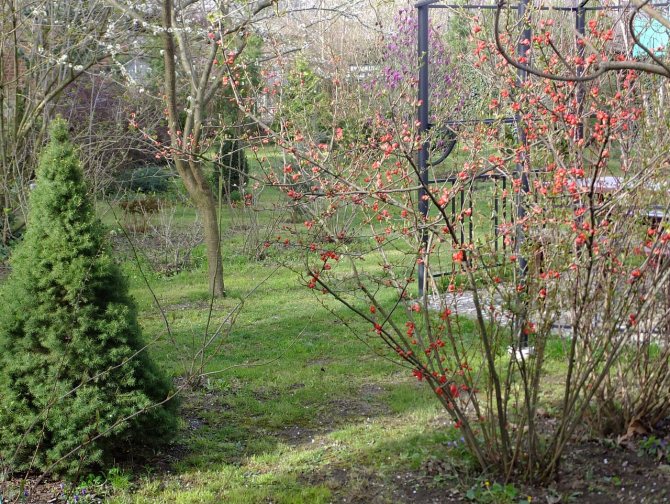
A properly formed chaenomeles bush consists of a maximum of 20 shoots
If the chaenomeles is formed in the form of a standard tree, all small branches below the grafting site are additionally removed. Also, the plant in large quantities gives root shoots. For reproduction, you can leave no more than 3-4 layers, the rest are dug out, carefully chopping up the roots with a shovel.
Pruning is carried out only with a sharply sharpened and disinfected knife or pruner. If the branches reach a thickness of 5–7 mm or more, the “wounds” are disinfected with a 2% solution of copper sulfate and covered with garden varnish or covered with oil paint in several layers.
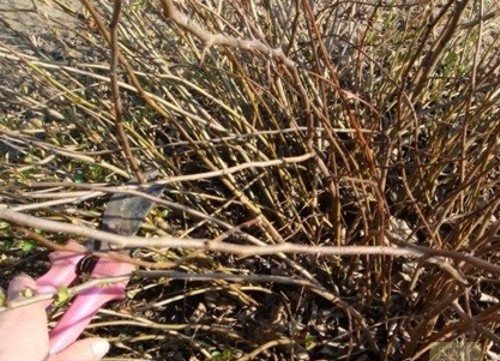

The instrument used to trim the chaenomeles must be sharpened and sterile.
Pruning old branches for new growth
In order for the Japanese quince not to get sick, you must not skip leaving in the fall. Pruning branches is the best preparation for winter. To do this, you need to get a pruner, sharp garden shears and heavy gloves. If you work with your bare hands, you can get injured by thorns.

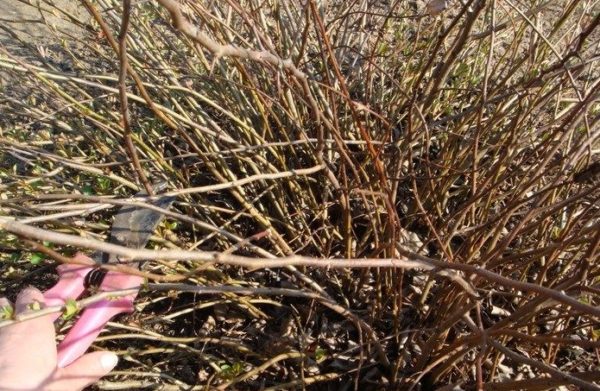
First of all, you need to correct the shape of the bushes and cut off the old branches, which can be distinguished by the darker bark. Together with them, we confidently cut off broken and starting to dry out branches, as well as young shoots protruding strongly forward, shortening by about ⅓ part.
